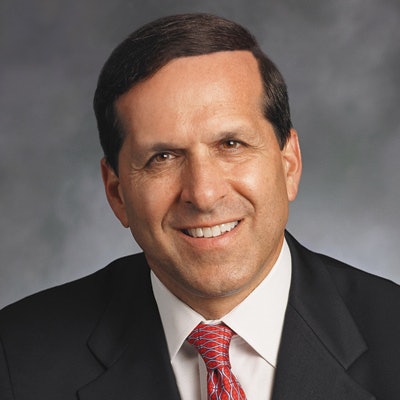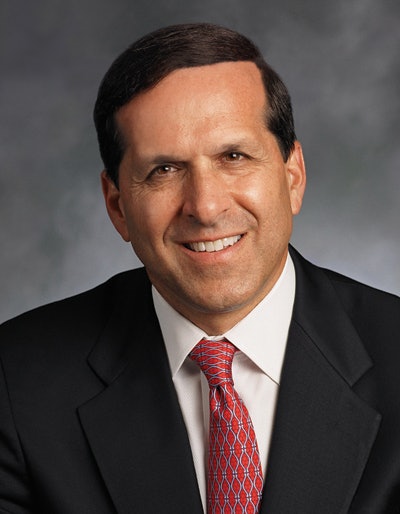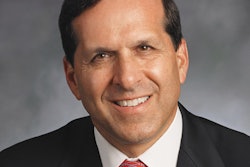
In the first installment of this series, we looked at the first two phases of becoming the CEO of your practice: the entrepreneur and rapid growth phases. Let's continue with our overview of the journey by discussing the next two phases.
Phase 3: The CEO
Is there a better way to practice dentistry than reaching a plateau in late phase two (rapid growth), trying to push past it, and recreating chaos, stress, and fatigue? The answer is yes.
Phase three is where you move from entrepreneur to CEO; however, it can only be reached if the practice becomes highly systemized and establishes a strong, well-trained, skilled office manager.
 Dr. Roger P. Levin.
Dr. Roger P. Levin.All practices have systems. The challenge is that many practices have poorly designed systems that focus on "getting through the day" and have been put together over many years. Or practices have outgrown their systems.
The vast majority of practices use a conglomeration of poorly designed systems that have been altered gradually over the years to make it easier to get through the day. As an example, we recently began working with a practice where the doctor became angry about the number of no-shows and put in place a minimum 50% deposit to make a treatment appointment. This resulted in a large drop in case acceptance, and production dropped quickly as well. This is an example of ignoring a system's overall purpose and simply altering the existing system with a one-off decision that happened to be a bad one.
Systems are the backbone and key to success of every dental practice. There are fundamental systems that have proved to function extremely well. Certain customized modifications can be made based on each individual practice, but most doctors far overestimate the uniqueness of their practice and ignore proven systems design.
The attitude is simply the following: If we get through the day with a fairly full schedule, then everything is fine. This is actually true in the early and middle stages of phase two, but it will result in a production plateau and a frustrating practice when trying to push past that plateau.
Enter phase three. You are now the CEO -- not the manager. You don't handle managerial or administrative duties. In phase three, the major systems are in place. They are documented and designed step by step, and the team becomes exquisitely trained on them. Full accountability measurements are established.
Measurement becomes one of the critical aspects of phase three in which a doctor can simply look at approximately 12 to 14 key performance indicators or targets and immediately understand how the practice is performing. Believe it or not, despite all the data available today, you can tell most of what you need to know about a practice using fewer than 14 key statistics or targets. If a target isn't within range, you should investigate further as to why.
Unfortunately, the investigation isn't simply looking at additional data. It is often due to human factors such as not following the systems, skipping steps, being improperly trained, or ignoring scripting.
A practice with well-designed systems and a trained team will move easily into phase three, reducing pressure and stress on the doctor, elevating the team's capability and performance, and increasing production, profit, and cash. But there is one missing link -- a highly trained office manager.
You might assume that because you have an office manager, or at least someone with that title, you can check off that box and your practice is fine. However, first consider what Levin Group has observed over 36 years. We've found that 96% of dental office managers have no previous management education, training, or experience.
How is this possible? Well, it's not unusual for doctors to identify a team member they like and trust and put them in the role of office manager. This can actually work if the office manager receives the right support, training, and guidance to learn how to do the job. However, learning how to do the job takes at least two years and is not as simple as taking a front desk person and putting him or her in charge.
If a practice wants to enter and grow through phase three, the doctor will need someone to act as a buffer between the doctor and the team. This person should both inspire and manage the team. This is what we refer to as a "real" office manager who handles all human resources (recruiting, hiring, training, measuring, and, when necessary, terminating) and is responsible for all other day-to-day office operational functions.
The team members quickly learn that if there is a question, they should go to the office manager and not the doctor. Then, the doctor can move into his or her intended role of spending the day focused on patient care.
This is not a difficult process, but it's one that requires time. Almost a year is needed before the culture can be fully designed around a new office manager. The goal of this approach is to have the office manager function like a chief operating officer in a Fortune 500 company. The office manager and doctor may occasionally need to make decisions together, but most of the decisions should be made by the office manager independently.
As an example, we had the pleasure of training an office manager who after 12 months performed at such a high level that she was told by the doctor it was her decision alone as to who she hired and kept on the team and how she compensated them. The doctor quickly lost his paranoia about letting someone else manage other team members and created an office manager scenario that allowed him to move into phase three.
Practice production in that same 12 months went up by more than 20%. Interestingly, team members were also very happy. They liked having access to the office manager and benefited from the hands-on training, motivation, and great compassion that she provided. As this doctor stated: "This is the most fun and enjoyable year I've had in my entire career."
Phase three, in essence, is where the practice is running at maximum efficiency and effectiveness. It typically allows the practice to grow between 20% and 40% without adding any additional team members or associates. Keep in mind that while phase three can be satisfying and financially rewarding, it can also be a time of change and turmoil. Many practices revert to phase two (rapid growth) if they haven't strategized properly for the future.
Phase 4: The strategist
Even in phase three, you can plateau. For most practices, phase three would be a wonderful place to stop and hope to sustain the current production, profit, income, and cash flow. It would lead to a fantastic career with steady income and excellent retirement savings.
But some doctors want to go further. They comprise 3% to 5% of the dental profession and, interestingly, are typically driven more by the enjoyment and fun of growing a practice than by monetary incentives.
In phase four, the doctor essentially does nothing but dentistry and strategy. Dentistry is necessary to create production, revenue, and cash flow. Strategy is necessary to keep the practice moving forward.
Doctors may strategize about hiring new team members, hiring an associate, opening another practice, or changing the patient flow, but they don't spend time on day-to-day operations or decisions, or involve themselves in areas handled by the office manager.
They immerse themselves in strategy, and many have a five-year plan with specific strategies, deadlines, and responsible parties all mapped out. They take time to explore through continuing education and often have expert mentors guiding and challenging them. A few even have executive coaches.
Phase four is not for every practice, and it isn't necessarily a phase that every dentist should aspire to reach. It isn't necessary to be in phase four to have a wonderful career, but being in phase four is the highest level of financial reward, career satisfaction, and fun that any dentist could ever hope to achieve.
To some degree, as one doctor described it, reaching phase four is more about the game than the benefits. He enjoyed growing his practice, thinking strategically, and inspiring others. Today, this dentist's practice is in the top 3% of dental practices. He has worked hard, built a great team and organization, and loves going to work. He also said he could not see any reason to think about retiring. He is having too much fun.
Phase four is that unique phase where many things are possible, but true phase four leaders understand that taking on too much is as dangerous as not taking on enough. They work hard to identify the right areas for improvement and focus on their leadership skills, building and maintaining a world-class team, and providing five-star customer service.
Don't be fooled into thinking that all these phase four practices are fee-for-service only or elite practices. Most are hybrids; the minority are completely fee-for-service. There's more than one model for dental practices to be highly successful, but there is only one pathway leading from phase one to phase four.
Summary of the journey
Going from entrepreneur to CEO is not easy. It is especially not easy because dentists, like most entrepreneurs, have no business background. Every year, thousands of small businesses open -- and every year, thousands of small businesses close. Dentists are fortunate in that very few practices go bankrupt or must be sold inexpensively.
The supply and demand of dentists is not as good as it used to be, but it's still good and most dentists have an excellent chance of making it. The question is: How far will they go?
The objective of this series was to lay out the four stages of going from entrepreneur to CEO with the true transition away from entrepreneur to CEO beginning by entering stage three. Most dentists will spend their careers in phase two. There's nothing wrong with this, but it is not the easiest and most fun way to practice dentistry. Nor is it the most financially rewarding.
Entering phase three requires the practice to go to an entirely new level with implemented systems, a highly trained team, and a skilled office manager. From there, the practice can enter phase four, which allows the dentist to focus on patient care, leadership, and strategy.
Dentists need to ask themselves the following questions:
- How far do I want to go?
- What expertise have I surrounded myself with?
- How motivated am I?
Once they've answered these questions, the sky's the limit!
Dr. Roger P. Levin is CEO of Levin Group, a leading practice management and marketing consulting firm. To contact him or to join the 40,000 dental professionals who receive his Practice Production Tip of the Day, visit LevinGroup.com or email [email protected].
The comments and observations expressed herein do not necessarily reflect the opinions of DrBicuspid.com, nor should they be construed as an endorsement or admonishment of any particular idea, vendor, or organization.



















